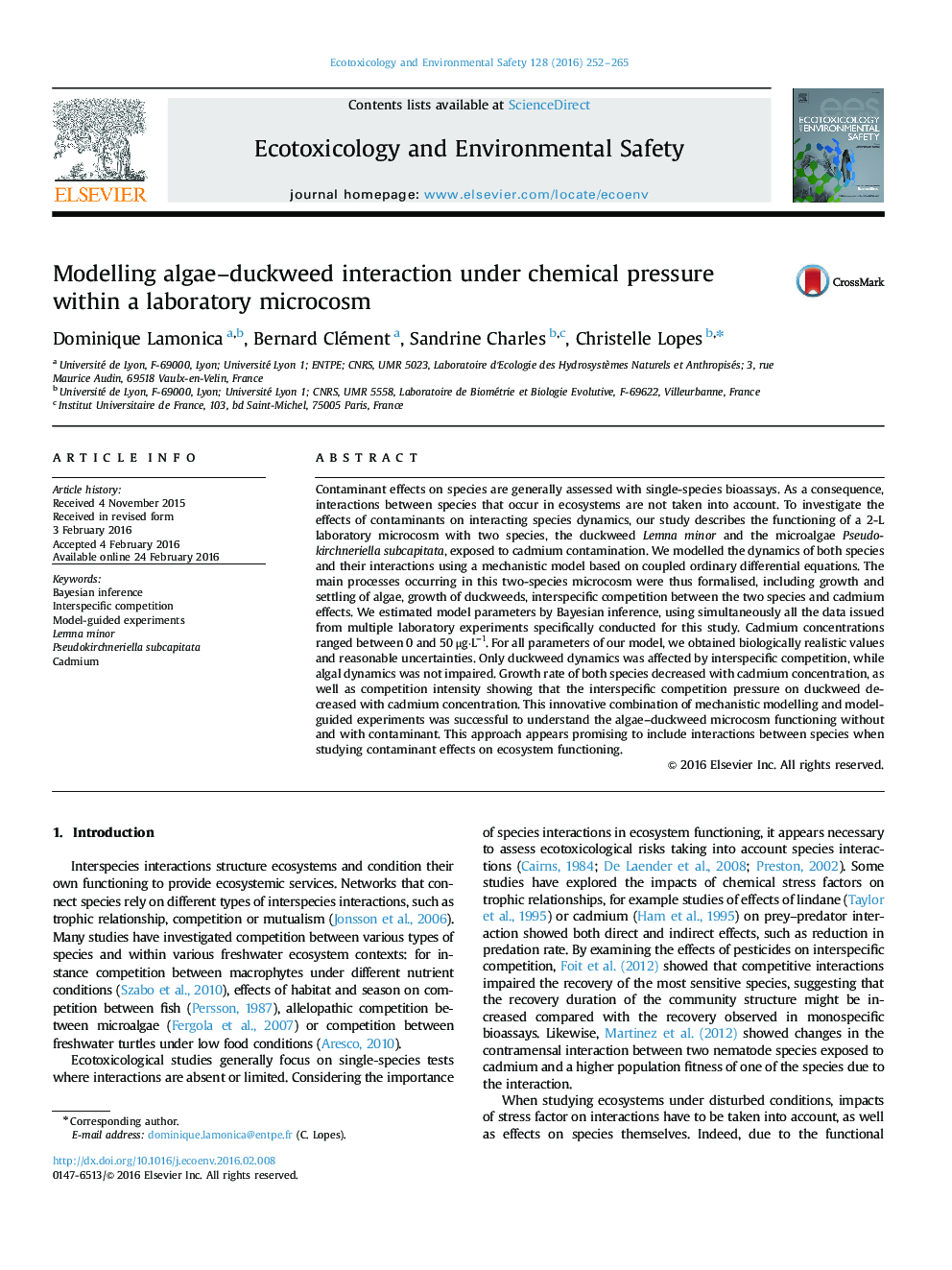| کد مقاله | کد نشریه | سال انتشار | مقاله انگلیسی | نسخه تمام متن |
|---|---|---|---|---|
| 4419360 | 1618935 | 2016 | 14 صفحه PDF | دانلود رایگان |
• We modelled cadmium effects on a microcosm composed of duckweeds and microalgae.
• The mechanistic dynamic model focused on the interaction between the two species.
• Experiments were performed to provide data for parameter estimation.
• Parameters were estimated by Bayesian inference using all data simultaneously.
• Cadmium affected interspecific competition intensity and both species growth rates.
Contaminant effects on species are generally assessed with single-species bioassays. As a consequence, interactions between species that occur in ecosystems are not taken into account. To investigate the effects of contaminants on interacting species dynamics, our study describes the functioning of a 2-L laboratory microcosm with two species, the duckweed Lemna minor and the microalgae Pseudokirchneriella subcapitata , exposed to cadmium contamination. We modelled the dynamics of both species and their interactions using a mechanistic model based on coupled ordinary differential equations. The main processes occurring in this two-species microcosm were thus formalised, including growth and settling of algae, growth of duckweeds, interspecific competition between the two species and cadmium effects. We estimated model parameters by Bayesian inference, using simultaneously all the data issued from multiple laboratory experiments specifically conducted for this study. Cadmium concentrations ranged between 0 and 50μg·L−1. For all parameters of our model, we obtained biologically realistic values and reasonable uncertainties. Only duckweed dynamics was affected by interspecific competition, while algal dynamics was not impaired. Growth rate of both species decreased with cadmium concentration, as well as competition intensity showing that the interspecific competition pressure on duckweed decreased with cadmium concentration. This innovative combination of mechanistic modelling and model-guided experiments was successful to understand the algae–duckweed microcosm functioning without and with contaminant. This approach appears promising to include interactions between species when studying contaminant effects on ecosystem functioning.
Journal: Ecotoxicology and Environmental Safety - Volume 128, June 2016, Pages 252–265
